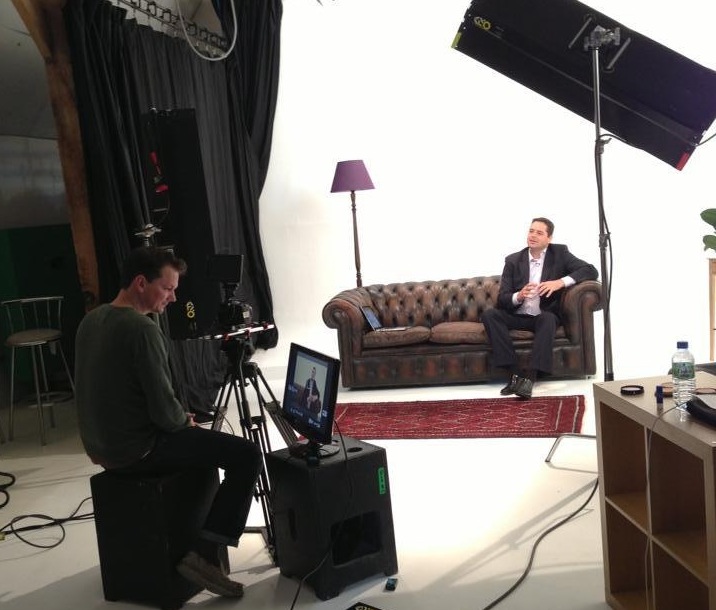The Ice Bucket challenge for ALS is probably the most successful meme created thus far for social media. Of course, social media experts are now trying to reverse engineer it to discover the secrets to successfully created a viral campaign – that holy grail of modern media. Much will be said, and will include items like personal connections, emotion, a worthy cause, fun, challenge, simplicity and activating networks (what some academics call “social currency”).
But one of the hidden secrets behind the success of the ice bucket challenge is autoplay videos. Facebook introduced these just a few months ago. As you scroll down your feed, videos spring to life (without sound until you click on them) and clamour for your attention. Even if you scroll past the first moving image of a scantily clad friend in their backyard, and don’t even notice the bucket next to them, by the time you see this motif for the third or fourth time, your interest is piqued and you click to watch the whole video. These are short, sharp, to the point. They’re funny, engaging and connecting. And then, of course, you receive the challenge directly from someone, and you’re hooked.
And then, about two months ago, Facebook made a further adjustment to their newsfeed algorithm. They started to judge not just what people clicked on, but how long they watched it for. This includes videos and click through links. In essence, the new algorithm, now just a few weeks old, says: “People who tend to watch more video in News Feed should expect to see more videos near the top of their Feed.” The same is true of any content you click through to and then stay and actually read. There is less emphasis on what you “like” and what you “click” and more on what you actually watch.
This happened just in time for the ALS ice bucket challenge. The more you watched, the more you were shown. And a meme was born, grew up and matured in less than a week.
It’s as hard as ever to create a viral campaign, and I am still convinced it’s more luck than design. But with each global meme that emerges we learn more lessons about what works and what doesn’t.
But this particular meme has an added lesson for me, and it’s this: video is about to go mainstream.
If you’re a teenager reading this, your response would be “duh”. YouTube’s statistics are insane, and they’ve outstripped all predictions for growth and take up that even their wildest fans made a few years ago. Gen Y now use the Net for TV shows more than they use TV in developed countries (see The Daily Telegraph report here). And just yesterday, Amazon beat Facebook and Google in a bidding war to buy Twitch for nearly $1 billion (OK, I just earned back my teenage street cred with that reference. For everyone over 21 years old – look it up). So, yes, video isn’t the future: it’s now.
But most companies, and most people over the age of 25, do not think of video first when they’re: searching for news, looking for something to ‘read’, search for information, looking for practical help, or for personal development. We’re still stuck to books, manuals, blogs and call centres. But that is changing. More and more communication is happening by video. Facebook’s shift to autoplay videos has seen an immediate 100% jump in video watching – it’s literally doubled. And that’s just the start.
 For the past few years, our team has become increasingly convinced that the communication tool of the future is video. We’ve been experimenting furiously since then. We’ve created a TV channel in collaboration with yourBusinessChannel (a team we’d HIGHLY recommend you talk to), we’ve experimented with a YouTube channel called Signposts and each of our presenters is working hard to fill their YouTube channels with videos of all sizes and shapes; we’ve developed a number of series of online video series for personal and team development, and we’ve started a series of short “thought bullet” videos. We’re increasingly using videos as part of our leadership development programmes, and working out what works best for busy executives and leaders in this space. The video pages of our team’s various websites are amongst the most clicked on pages we have.
For the past few years, our team has become increasingly convinced that the communication tool of the future is video. We’ve been experimenting furiously since then. We’ve created a TV channel in collaboration with yourBusinessChannel (a team we’d HIGHLY recommend you talk to), we’ve experimented with a YouTube channel called Signposts and each of our presenters is working hard to fill their YouTube channels with videos of all sizes and shapes; we’ve developed a number of series of online video series for personal and team development, and we’ve started a series of short “thought bullet” videos. We’re increasingly using videos as part of our leadership development programmes, and working out what works best for busy executives and leaders in this space. The video pages of our team’s various websites are amongst the most clicked on pages we have.
All of this leads to a simple conclusion: Your future success in sales, marketing, communications, training, leadership development and any area of your business that requires people to listen, learn and change, depends increasingly on video and how you use it. It cannot be ignored, and it is not just a fad. It is vital to your business’s success. How are you harnessing video right now? What experiments do you have on the go at the moment? And what your plans for the next year?

